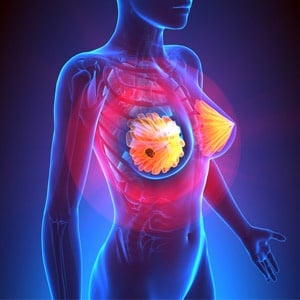
Nipple discharge is worrying as it may be associated with breast cancer. The majority of people with a nipple discharge do not have cancer especially if they are young, the discharge is not bloody or if it comes from more than one duct.
The breast is made up of several lobes. Each lobe has a duct that drains it. The ducts go towards the nipple. There are 5-10 major ducts that surface on the nipple. The discharge may be from one or more than one.
When should you worry about discharge from the nipple?
- If the discharge is bloody
- If the discharge is from one duct
- If you are over 40
- If it is persistent
- If there is also a lump which can be felt
No matter how old you are and what the discharge is like, the cause should always be found out.
What are the causes of nipple discharge?
Cancer may be the cause of the nipple discharge and it is important to rule it out. However, in this section, we are discussing non cancerous causes.
Physiological causes:
It is normal for women to be able to express some whitish fluid from the nipple. It will usually only be seen after the breast has been caressed or after a warm bath. It will come from more than one duct.
Papillomas:
These are small growths that occur within the duct. They are frond-like structures and are attached to the duct wall by a stalk. Occasionally, they can be felt. They may also be seen with ultrasound. They have a typical appearance. As they are growths in a single duct, they usually cause discharge from a single duct.
The diagnosis can often not be made with absolute certainty so they may be removed surgically. If there is no lump palpable the operation to remove the duct involves being put to sleep, a probe being put down the duct with the discharge and the area of breast underneath being removed. True papillomas are not malignant but it is sometimes difficult to decide whether the cause of the discharge is due to a papilloma or cancer.
Periductal mastitis and duct ectasia:
Mastitis means inflammation of the breast. This may be caused by infection or by irritation of the ducts from other causes.
Duct ectasia means dilation of the terminal ducts of the breast. As a woman gets older, so her ducts dilate and become slightly “leaky”. Some of the fluid that is normally inside the duct can leak out and so cause the ‘mastitis’.
Who gets periductal mastitis and duct ectasia?
Older women: duct dilatation is a normal process of ageing.
Smokers: it is not understood why.
Galactorrhea:
This is a milky discharge which is not associated with pregnancy. The cause is raised prolactin levels. Prolactin is the hormone associated with milk production during pregnancy. There are different reasons why it may be elevated. The commonest causes are drugs such as psychotropic drugs. Occasionally, it may be due to a pituitary tumour but this is an uncommon cause.
Eczema:
Eczema of the breast or nipple can also cause a nipple discharge. It can also be confused with a condition called Paget’s disease of the nipple which is cancerous. Again, cancer must be ruled out and a true diagnosis of eczema made.




 Publications
Publications
 Partners
Partners















